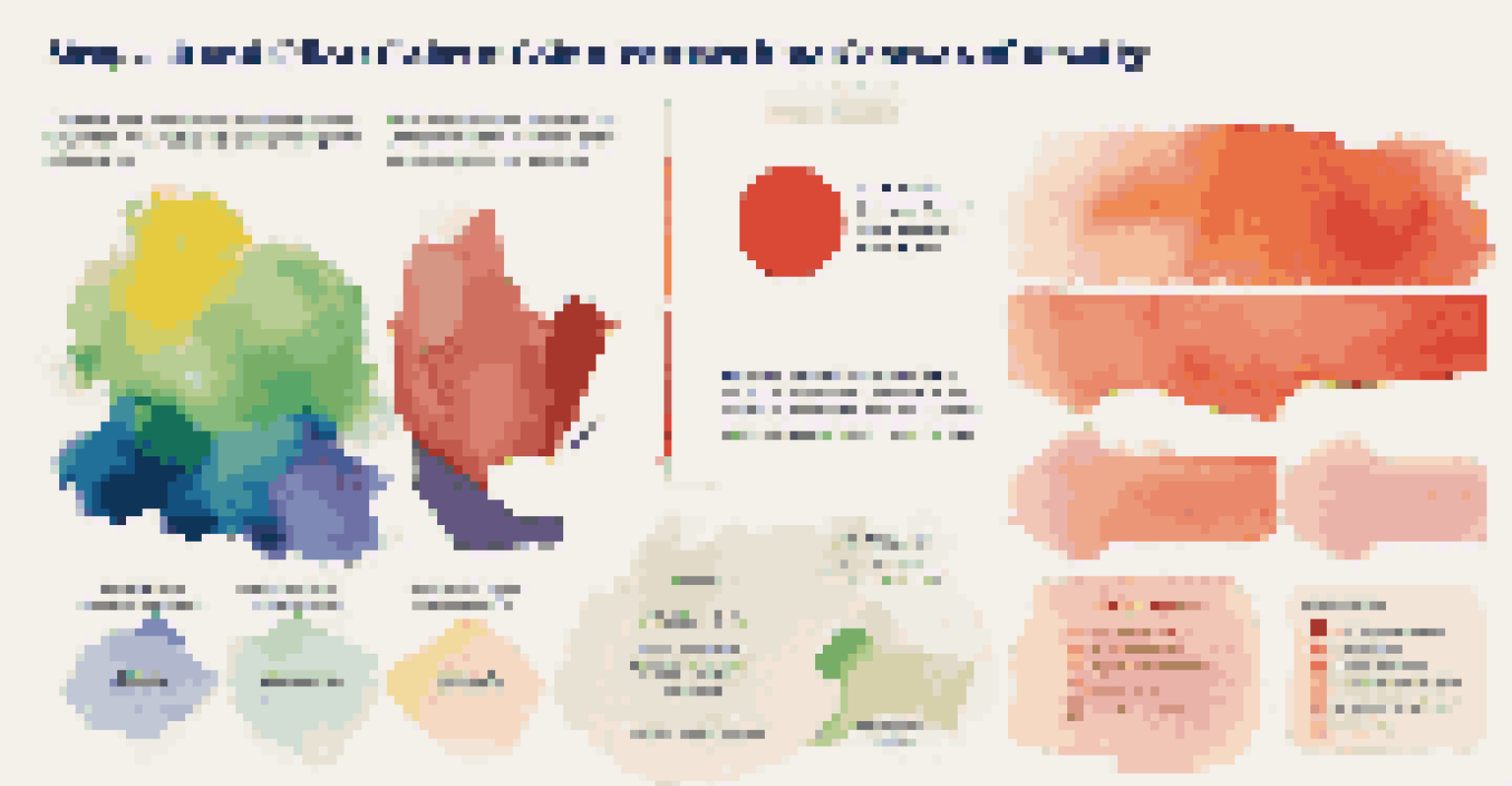Accessibility in Content Creation: Tools for Everyone

Understanding Accessibility in Content Creation
Accessibility in content creation means ensuring that everyone, regardless of their abilities or disabilities, can access and benefit from your content. This concept encompasses a wide range of considerations, including visual, auditory, and cognitive accessibility. By prioritizing accessibility, we create a more inclusive environment that welcomes diverse audiences and fosters engagement.
Accessibility allows us to tap into the talents of all people, regardless of their abilities.
Imagine walking into a library where every book is written in a different language, making it impossible for many to understand. This scenario mirrors the challenges faced by individuals with disabilities when they encounter inaccessible content. Therefore, understanding accessibility is not just a legal requirement; it's about empathy and inclusivity.
As we delve deeper into this topic, we'll explore essential tools and strategies to enhance accessibility in your content creation process. These tools are designed not only to comply with standards but also to enrich the user experience for everyone.
The Importance of Alt Text for Images
Alt text, or alternative text, serves as a description of images for users who are visually impaired or using screen readers. This simple yet powerful tool ensures that all users can understand the context and content of your visuals. Without alt text, images become barriers rather than bridges to understanding.

Think of alt text as the captions for a silent movie; it tells the story that visuals alone cannot convey. For example, if you have an image of a dog playing fetch, an effective alt text could be 'A golden retriever joyfully retrieving a ball in a sunny park.' This not only describes the image but also sets the scene and mood.
Accessibility is Essential
Creating accessible content ensures that all individuals, regardless of their abilities, can engage with and benefit from your material.
Incorporating alt text is a straightforward process that can significantly improve the accessibility of your content. By making this small effort, you can help ensure that your message reaches a broader audience.
Captions and Transcripts for Video Content
Captions and transcripts are essential elements for making video content accessible, especially for those who are deaf or hard of hearing. Captions provide a written representation of spoken dialogue and sound effects within the video, while transcripts offer a complete text version of the audio. Both tools play a crucial role in enhancing comprehension and engagement.
The power of the web is in its universality. Access by everyone regardless of disability is an essential aspect.
Imagine watching a gripping documentary but missing out on crucial dialogue due to audio issues. Captions and transcripts prevent such frustrations, allowing viewers to fully immerse themselves in the content. They also benefit non-native speakers who may find it easier to follow along with text.
By including captions and transcripts, you're not only complying with accessibility standards but also enriching your content. This practice invites a wider audience to enjoy and engage with your videos.
Color Contrast and Design Accessibility
Color contrast is a vital aspect of design accessibility. Poor contrast between text and background can make content difficult to read for individuals with visual impairments, such as color blindness. Ensuring adequate contrast enhances readability and user experience, making your content more inclusive.
Picture trying to read a book printed in light gray ink on a white page; it would be a frustrating experience, right? The same principle applies to digital content. Tools like contrast checkers can help you evaluate your color choices and make adjustments to ensure accessibility.
Utilize Alt Text for Images
Alt text provides crucial descriptions for images, making visuals understandable for users who are visually impaired or using screen readers.
When designing your content, it's essential to consider not just aesthetics but also functionality. By prioritizing color contrast, you create an inviting space for all users, regardless of their visual capabilities.
User-Friendly Navigation for All Audiences
User-friendly navigation is crucial for ensuring that all audiences can explore your content easily. A well-structured layout with clear headings, consistent menus, and easily identifiable links can make a world of difference for individuals with cognitive disabilities or those using assistive technologies. Good navigation is like a well-marked trail in a forest; it guides users to their destination without confusion.
Consider how frustrating it is to wander through a maze without any signs. Similarly, poor navigation can lead users to abandon your content altogether. By implementing features like breadcrumb trails, search bars, and logical categories, you enhance the overall user experience.
As you design your content, prioritize intuitive navigation. This approach not only benefits individuals with disabilities but also improves usability for everyone, ensuring that your message is easily accessible.
Utilizing Screen Reader-Friendly Formats
Screen readers are essential tools for individuals who are blind or visually impaired, converting text into speech. To create content that is friendly for screen readers, it's important to use clear headings, lists, and simple language. This structure helps users navigate through your content smoothly, much like having a guide who explains each step along the way.
Imagine reading a complex academic paper filled with jargon and dense paragraphs without any breaks. It would be overwhelming! By using headings and lists, you create a roadmap that makes your content more digestible and engaging.
Prioritize User Navigation
User-friendly navigation enhances accessibility, guiding all users seamlessly through your content and improving overall engagement.
By considering screen reader compatibility, you not only enhance accessibility but also improve the overall clarity of your content. This practice invites everyone to engage with your work, regardless of their reading abilities.
Testing Your Content for Accessibility
Testing your content for accessibility is a crucial step in the creation process. It ensures that your content meets established guidelines and is usable for all individuals. Various tools and resources are available to help you assess accessibility, including automated testing tools and user feedback.
Think of testing for accessibility like proofreading a manuscript. Just as you would look for grammatical errors, you should also check for accessibility issues. This might include evaluating alt text, color contrast, and navigation ease, ensuring that your content is truly inclusive.

By regularly testing your content, you can identify and address potential barriers before they reach your audience. This proactive approach not only improves accessibility but also enhances the overall quality of your content.
Embracing Accessibility as a Core Value
Embracing accessibility as a core value in your content creation process means committing to inclusivity and diversity. It’s about understanding that everyone deserves access to information and experiences, regardless of their abilities. This mindset fosters a culture of empathy and consideration in your work.
Consider the positive impact of creating accessible content; it's not just about compliance but also about building a community. By prioritizing accessibility, you demonstrate that you value all users and are willing to meet their needs. This approach can lead to increased engagement and loyalty from your audience.
Ultimately, making accessibility a core value enriches your content and transforms your brand's image. It reflects a genuine commitment to inclusivity, ensuring that everyone can participate in the conversation.